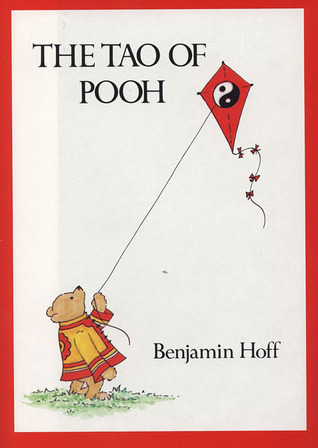180 Results with the "Philosophical" genre
Adventure Fiction (1001)
Biography (410)
Business & Finance (1)
Children's Literature (124)
Comics (6)
Culture (51)
Drama (28)
Dystopian (16)
Fable (86)
Fantasy (1108)
Fantasy (145)
Fiction (921)
Finance (16)
Gothic Fiction (12)
Historical Fiction (437)
History (122)
Horror (55)
Lifestyle (36)
Literary (404)
Literary Fiction (168)
Memoir (167)
Mystery (333)
Non-fiction (97)
Novel (549)
Paranormal Fiction (96)
Philosophy (45)
Poetry (249)
Political Fiction (11)
Politics (41)
Practical (32)
Psychological Thriller (107)
Relationship (5)
Romance Novel (712)
Romantic Melodrama (14)
Satire (91)
Science (55)
Science Fiction (238)
Self-help (64)
Society (65)
Society (2)
Spiritual Growth (1)
story (2)
Thriller (675)
True Crime (55)
view (11)
Women's Fiction (1)
Young Adult (118)
-
Chapter
Essence
 The essence of any creative work is its foundational truth—the invisible framework that holds everything together, even when its outward form is altered. It is the intangible “is-ness” that remains intact, much like the way a child’s drawing of a house is still recognizable, even if it lacks certain details like a door or a chimney. Every piece of art, whether visual, literary, or musical, contains this defining characteristic, which may stem from its theme, structure, emotional tone, or the unique…
The essence of any creative work is its foundational truth—the invisible framework that holds everything together, even when its outward form is altered. It is the intangible “is-ness” that remains intact, much like the way a child’s drawing of a house is still recognizable, even if it lacks certain details like a door or a chimney. Every piece of art, whether visual, literary, or musical, contains this defining characteristic, which may stem from its theme, structure, emotional tone, or the unique…-
341.4 K • Ongoing
-
-
Story
The Tao of Pooh
 The Tao of Pooh by Benjamin Hoff uses Winnie the Pooh to explain Taoism, showing how simplicity and harmony lead to peace and contentment.
The Tao of Pooh by Benjamin Hoff uses Winnie the Pooh to explain Taoism, showing how simplicity and harmony lead to peace and contentment.-
4.5 K • Jan 24, '25
-
4.9 K • Jan 24, '25
-
4.2 K • Jan 24, '25
-
-
Chapter
Patience
 In an age where speed is often glorified, patience emerges as an underappreciated virtue, reminding us of the value found in slowing down and embracing the process. The modern world frequently encourages instant gratification—whether through rapid information consumption, quick-fix solutions, or the pursuit of overnight success. Yet, history and experience reveal that true mastery, fulfillment, and even happiness stem from patience and perseverance. The text "Patience" challenges the notion that faster…
In an age where speed is often glorified, patience emerges as an underappreciated virtue, reminding us of the value found in slowing down and embracing the process. The modern world frequently encourages instant gratification—whether through rapid information consumption, quick-fix solutions, or the pursuit of overnight success. Yet, history and experience reveal that true mastery, fulfillment, and even happiness stem from patience and perseverance. The text "Patience" challenges the notion that faster…-
341.4 K • Ongoing
-
-
Chapter
Spontaneity (Special Moments)
 Spontaneity plays a crucial role in the creative process, offering a unique dimension to artistic expression. This chapter explores whether works created in a moment of inspiration hold the same value as those meticulously crafted over time. It suggests that art is not necessarily defined by the duration of its creation but by the emotional impact it has on the audience. Whether a piece takes years to refine or emerges effortlessly in a single sitting, its significance lies in its ability to connect with…
Spontaneity plays a crucial role in the creative process, offering a unique dimension to artistic expression. This chapter explores whether works created in a moment of inspiration hold the same value as those meticulously crafted over time. It suggests that art is not necessarily defined by the duration of its creation but by the emotional impact it has on the audience. Whether a piece takes years to refine or emerges effortlessly in a single sitting, its significance lies in its ability to connect with…-
341.4 K • Ongoing
-
-
Chapter
Chapter 7: Bisy Backson
 In this chapter Bisy Backson portrays a character who is overwhelmed by the need to stay busy, yet his frantic efforts lead him nowhere. The story begins with Rabbit, who starts his day feeling important, but quickly becomes puzzled when he finds Christopher Robin’s house empty, except for a mysterious note saying “GON OUT BACKSON BISY BACKSON.” This cryptic message piques Rabbit's curiosity about who or what the Backson might be. Determined to find answers, Rabbit consults Owl, but discovers that…
In this chapter Bisy Backson portrays a character who is overwhelmed by the need to stay busy, yet his frantic efforts lead him nowhere. The story begins with Rabbit, who starts his day feeling important, but quickly becomes puzzled when he finds Christopher Robin’s house empty, except for a mysterious note saying “GON OUT BACKSON BISY BACKSON.” This cryptic message piques Rabbit's curiosity about who or what the Backson might be. Determined to find answers, Rabbit consults Owl, but discovers that…-
68.0 K • Ongoing
-
-
Chapter
Tuning In
 The chapter "Tuning In" delves into the idea that creativity is not an isolated human endeavor but a universal force that permeates all aspects of existence. Just as rivers carve landscapes and trees sprout leaves in accordance with nature’s cycles, human beings create in alignment with an unseen, yet omnipresent, creative energy. The text suggests that this energy, often perceived as inspiration, is not something individuals generate on their own but something they tune into—much like radio antennas…
The chapter "Tuning In" delves into the idea that creativity is not an isolated human endeavor but a universal force that permeates all aspects of existence. Just as rivers carve landscapes and trees sprout leaves in accordance with nature’s cycles, human beings create in alignment with an unseen, yet omnipresent, creative energy. The text suggests that this energy, often perceived as inspiration, is not something individuals generate on their own but something they tune into—much like radio antennas…-
341.4 K • Ongoing
-
-
Chapter
Completion
 Completion marks the final stage of any creative endeavor, signaling both an achievement and a turning point in an artist’s journey. It is the moment when a creator must decide that their work is ready to be shared with the world, despite lingering doubts or the desire for perfection. Many struggle with this phase, fearing that their work is incomplete or could still be refined. However, recognizing that true completion does not equate to flawlessness but rather to a work embodying its intended essence…
Completion marks the final stage of any creative endeavor, signaling both an achievement and a turning point in an artist’s journey. It is the moment when a creator must decide that their work is ready to be shared with the world, despite lingering doubts or the desire for perfection. Many struggle with this phase, fearing that their work is incomplete or could still be refined. However, recognizing that true completion does not equate to flawlessness but rather to a work embodying its intended essence…-
341.4 K • Ongoing
-
-
 Ending to Start Anew explores the profound philosophy of renewal, drawing from Carl Jung’s perspective on life as a continuous cycle of creation, transformation, and rebirth. Jung’s fascination with circular structures, such as his dream of constructing a round tower, symbolizes his deep belief in the interconnected nature of beginnings and endings. This cyclical pattern is not only evident in nature and human existence but also mirrors the creative journey of artists, who constantly navigate the…
Ending to Start Anew explores the profound philosophy of renewal, drawing from Carl Jung’s perspective on life as a continuous cycle of creation, transformation, and rebirth. Jung’s fascination with circular structures, such as his dream of constructing a round tower, symbolizes his deep belief in the interconnected nature of beginnings and endings. This cyclical pattern is not only evident in nature and human existence but also mirrors the creative journey of artists, who constantly navigate the…-
341.4 K • Ongoing
-
-
Chapter
Memories and the Subconscious
 The subconscious plays a crucial role in artistic expression, often serving as an unseen guide that shapes creative output in ways that defy logical reasoning. Memories and the subconscious work in tandem, influencing vocalists who may instinctively produce melodies or utter words when first engaging with an instrumental track, seemingly without premeditation. This spontaneous act of creation may appear random, but upon closer examination, it often carries deeper meaning, emerging as a fully formed idea or…
The subconscious plays a crucial role in artistic expression, often serving as an unseen guide that shapes creative output in ways that defy logical reasoning. Memories and the subconscious work in tandem, influencing vocalists who may instinctively produce melodies or utter words when first engaging with an instrumental track, seemingly without premeditation. This spontaneous act of creation may appear random, but upon closer examination, it often carries deeper meaning, emerging as a fully formed idea or…-
341.4 K • Ongoing
-
-
Chapter
Apocrypha
 The opening chapter of Apocrypha unpacks the enigmatic nature of artistic creation, challenging the widely held belief that art follows a structured path or that artists hold complete mastery over their craft. It begins by highlighting the almost mythical status that many great artists achieve, their work often perceived as transcendent, as if crafted by forces beyond human comprehension. This elevation, while inspiring, creates a gap between the artist and the audience, fostering the illusion that the act…
The opening chapter of Apocrypha unpacks the enigmatic nature of artistic creation, challenging the widely held belief that art follows a structured path or that artists hold complete mastery over their craft. It begins by highlighting the almost mythical status that many great artists achieve, their work often perceived as transcendent, as if crafted by forces beyond human comprehension. This elevation, while inspiring, creates a gap between the artist and the audience, fostering the illusion that the act…-
341.4 K • Ongoing
-
- Previous 1 … 3 4 5 … 10 Next
